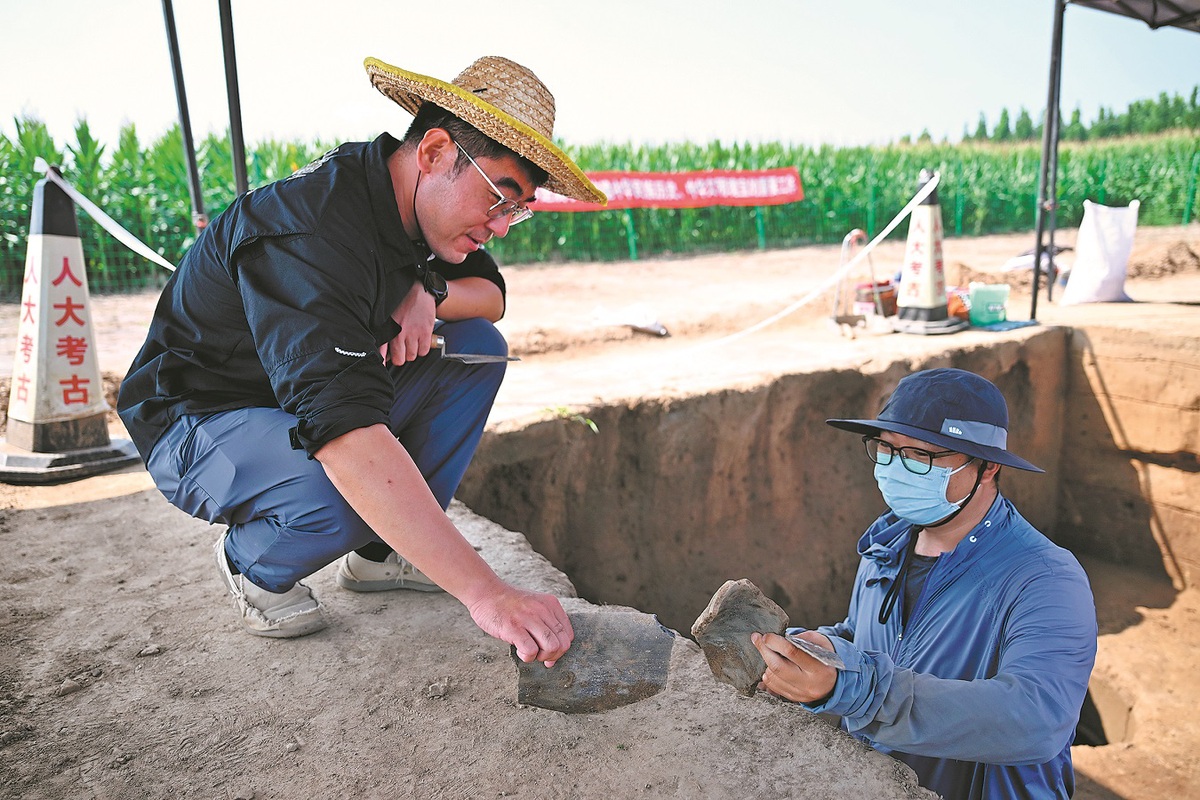Census records rich haul of cultural relics
Nation joins hands with other countries to stop illegal trade in national treasures


The ongoing fourth national census of cultural relics has recorded over 130,000 new immovable cultural heritage findings, the National Cultural Heritage Administration announced at a news conference held at the State Council Information Office on Wednesday.
In China, immovable cultural heritage comprises historical monuments, ancient architecture, grottoes, archaeological ruins, murals and so on.
About 767,000 such relics were registered with the authorities before the current census began in November 2023. Rao Quan, head of the National Cultural Heritage Administration, said at the news conference that all the previously registered relics were "rechecked" during the ongoing census.
"The census is fundamental to development of cultural relic-related work," Rao said. "It has attracted wide participation of the whole society."
About 5,000 investigation teams, involving 45,000 people, from all over the country took part in the field work for the census, which is scheduled to conclude next year. The general public also provided over 12,000 clues on possible cultural heritage sites, among which about half were later confirmed to be new findings.
Rao added that all county-level administrative regions also contributed toward new findings.
The national census of cultural relics is a key project of the 14th Five-Year Plan (2021-25). The last such census was carried out from 2007 to 2011.
At the news conference, it was revealed that China has closely cooperated with other countries in protection and study of shared cultural treasures of humanity.
China conducted six overseas historical monument restoration programs in four countries and participated in 49 cross-border joint archaeological research projects involving 28 countries and regions in the past five years.
Furthermore, 537 lost Chinese cultural relics were returned to China over 35 occasions since 2021. Among the successfully concluded restitution cases, some took over 25 years to arrive at a resolution.
Xie Bing, deputy head of the National Cultural Heritage Administration, said repatriation of lost cultural relics involves considerations spanning international politics, law, history, culture and national sentiments. So far, China has signed intergovernmental agreements with 27 countries to fight illicit import and export of cultural relics.
"This work operates within the constraints of an imperfect global regulatory framework while relying on consensus-building between nations, revealing its challenging and complex nature," Xie said.
China now has 60 entries on the UNESCO World Heritage List, one of the highest in the world. Xie revealed that several globally renowned sites were added to the nation's tentative list seeking World Heritage status in the next few years.
These include the ruins of Jingdezhen porcelain-making units in Jiangxi province, a key witness to China's ancient ceramic industry, and the over 3,000 years old Sanxingdui site in Sichuan province, which has amazed the world in recent years with rich discoveries of bronze ware and gold masks.





































